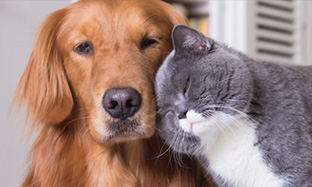
Change of kibble for my dog or cat: why is it important to have a careful nutritional transition?
Often, digestive disorders presented by a pet, notably diarrhea, are of food origin. Amongst frequent causes figure the nutritional diet change with a lack of transition.
Our dogs and our cats harbor, like us, a digestive flora in their intestines that we today call intestinal microbiota. The large intestine contains billions of bacteria.
This microbiota is important not only to ensure food digestion, but also more generally to maintain the good health of our pets.
Studies in this field are multiplying and the discoveries are numerous. In particular, it has been shown that the quality of the microbiota can play a role in the appearance of obesity, with the hope of treatment by transplantation of intestinal microbiota! This fragile microbiota is in permanent interrelation with the nutrients and the organism of the dog or cat, the whole constituting a complex ecosystem.
It has the particularity of being adapted to a type of food, our companion animals having a much more stable diet than ours. Their diet consists of dry or moist food and the microbiota adapts to it thanks to the secretion of adequate digestive enzymes.
Throughout his life, your pet will nevertheless have to change his diet and switch from a puppy diet to a junior and adult food, from a physiological nutrient to a regime or diet food if he presents particular health problems, etc.
Several situations can make this diet change necessary: age, disease, physiological status change (pregnant female dog for example), activity level, etc.
However, a sudden change in diet risks to provoke digestive disturbances and diarrhea, the microbiota not being used to this new diet, hence the importance of respecting a food transition to prevent these disorders.
Ideally, it should occur over at least a week, by mixing increasing amounts of the new food with the old one each day, that we reduce in equal proportions.
In practice, the 2 first days, we replace a quarter of the usual ration by the corresponding quantity of the new food. The next 2 days, the meal should contain half of each food, and the 2 last days, we mix 75% of the new food and 25% of the old one, before finally feeding only the new food.
If your dog or cat is sensitive, it is possible to add a day or more at each step.

